If you are asked about the most famous photographers in history, what names will be popping in your mind first? We guess it would be names like Dorothea Lange, Man Ray, Ansel Adams, Robert Capa, Henri Cartier Bresson, and so on. These photographers are known for their great works in the world of photography and left a unforgettable mark in their field.
These photographers are very different in terms of their favorite genres and subjects – what connects them is the fact that they are still well known around the world and many professional photographers and photography enthusiasts look up to their images.
List Of Famous Photographers
We'll start with Henri Cartier Bresson, a French humanist photographer, because he's perhaps the best known famous photographer. We will include famous portrait photographers, contemporary photographers and documentary photographers as well as many important names in street photography, fashion, and landscape photography, and most of them have worked as a freelance photographer for magazines, etc.
Henri Cartier Bresson
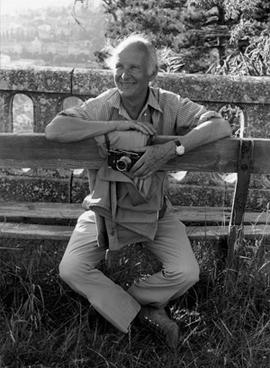
“To take a photograph is to align the head, the eye, and the heart. It's a way of life.”
— Henri Cartier Bresson—
This French photographer is a true king of street photography. He made everyday life scenes memorable thanks to his amazing street photographs.
Cartier Bresson who was a portrait and street photographer, bore witness to world-changing events from Spain’s Civil War to the death of Gandhi while capturing ‘decisive moments’ in the lives of ordinary people. Born in 1908 in a village outside Paris, Henri Cartier Bresson is considered one of the great 20th-century photographers. He was meant to inherit the family textile business, but the budding artist had other ideas. Due to a lack of access to painting materials, he was prompted to start taking amazing photographs of the people he met.
In order to achieve the candid shots for which he is known, Cartier Bresson blended in with his surroundings, never used a flash, and covered his chrome Leica camera with black tape to make it less conspicuous.
When he died in 2004, he left behind half a million negatives taken over the course of 50 years in more than 40 countries. Cartier-Bresson’s most-loved works were snapshots of ordinary people, doing ordinary things, going about their daily lives.
The expression ”decisive moment” is still used very often in photography.
Ansel Adams

“There are always two people in every picture: the photographer and the viewer.”
—Ansel Adams—
Ansel Adams was a professional photographer born in 1902 and was known for his black-and-white images of the American West. He is considered the most important landscape photographer and environmentalist of the 20th century. He depicted the American West in a majestic way.
Adams was fourteen when he visited Yosemite National Park for the first time with his family. He later described his first view, “The splendor of Yosemite burst upon me and it was glorious. Rainbows of living color, flashes of lightning, and rolls of thunder. One wonder after another descended. There was light everywhere, and a new era began for me.”
During that stay, his father gave him his first camera, an Eastman Kodak Brownie box camera, and his life as a photographer began. Later on, he often used large-format cameras.
Ansel Adams who was a famous American photographer, had a keen understanding of the specific quality of the light that fell on a specific place at a specific moment, which led him to develop the zone system, which determined the relationship of exposure, development, and the resulting densities of the photographic negative. The system's purpose was not technical but rather expressive, and he used it to visualize a finished photograph before the exposure was made.
Most of Adams’s great work as a photographer was completed by 1950. In his later life, he spent most of his energy as a photographer reinterpreting his earlier work.
Ansel Adams is still one of the best-known landscape photographers.
Robert Capa

“If your photographs aren't good enough, you're not close enough.”
—Robert Capa—
Robert Capa was a Hungarian-American war photographer and photojournalist known for his work on the Spanish civil war and is considered to be the greatest combat and adventure photographer in photography history.
In World War II he covered much of the heaviest fighting in Africa, Sicily, and Italy for Life magazine. His photographs of the Normandy Invasion became some of the most memorable of World War II.
Robert Capa is known for redefining wartime photojournalism and street images and is known for being the sole amateur photographer who arrived on Omaha Beach on D-Day. He was an excellent documentary photographer too. His work came from the trenches as opposed to the more arms-length perspective that was the precedent.
In 1954 he went on assignment for Life magazine to Southeast Asia where he accompanied a French regiment. While passing through a dangerous area under fire, the forty-year-old Capa left his jeep to photograph the advancing enemy when he stepped on a landmine and was killed.
Robert Capa was one of the most famous war photographers of all time.
Dorothea Lange

“Photography takes an instant out of time, altering life by holding it still.”
—Dorothea Lange—
Dorothea Lange, an American documentary photographer, was born at the very end of the 19th century to educated and prosperous first-generation German-Americans. She was one of the best of the American documentary photographers who used her art to document the human suffering caused by the 1930’s Great Depression. As she viewed it, photography was not an end in itself, but a means of exploring the world so as to improve it.
Dorothea Lange was comfortable with everyone she encountered, but particularly with the down-and-outers, the silent and invisible population suffering from circumstances beyond their understanding or control. Such people trusted her, and she viewed and exhibited them with compassion and respect.
Her most famous photograph, a black and white portrait known as the “Migrant Mother”, has been dubbed the “Mona Lisa” of depression-era photography.
Lange was a cultural commentator who used the camera to accurately record but never interfered with the political happenings of the time.
Her ”Migrant Mother” still remains one of the best-known photographs around the world. Portrait photography wouldn't be the same without Lange and her work.
Edward Weston
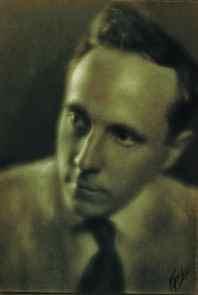
“My own eyes are no more than scouts on a preliminary search, because the camera’s eye may entirely change my idea.”
—Edward Weston—
Edward Henry Weston one of the most influential American photographers, was born in Highland Park, Illinois, in 1886. His father, an obstetrician, bought him his first camera, a Kodak Bulls-Eye No. 2, for his 16th birthday. The gift came with a note that included the helpful advice; “Don’t be too far from the object you wish to take, or it’ll be very small’.
Weston became a major American photographer and best known for his carefully composed, sharply focused, and full tonal scale images of sand dunes, landscapes, vegetables, rock forms, and semi-abstract nudes, which produced some of the world famous photographs and the most iconic images. In his work, he helped people see photography as an art.
Weston’s most celebrated images were of sand dunes, with their near-black forms he achieved in some parts through shadow, and the near-white dunes he achieved in others through brilliant light, causing the images to verge on abstraction.
The type of photographs in which Weston specialized is called “straight photography,” where no unusual effects are done to change the image of the photograph. His work is stunning in its simplicity.
Steve McCurry

“If you want to be a photographer first leave home.”
—Steve McCurry—
Steve McCurry is an American photographer, born in Philadelphia in 1950, and for more than thirty years has been one of the most prolific documentary/travel photographers in the world. He is recognized universally as one of today's finest image-makers. His ”Afghan girl” is certainly one of the most influential portrait images.
He is a master of working with color, and the way he contrasts the background and foreground colors is something that takes photographic eye years of practice. That's evident in his ”Afghan girl” too.
By using color repetition McCurry has developed a style that's universally recognizable.
His composition of lines and surfaces is one of the vital components that makes his photos look unique, and when people look at his work, their eyes circle around the image, leading them to study his pictures for a long time.
The ”unguarded moment” is a term that McCurry coined and uses to describe the perfect moment to take a photograph, that time when people are at their most unselfconscious, that split second where they seem to be oblivious to the rest of the world.
Richard Avedon
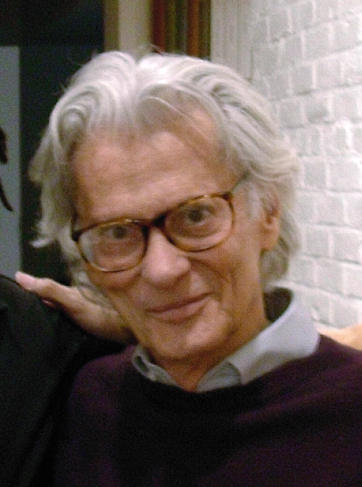
“I hate cameras. They interfere, they’re always in the way. I wish I could work with my eyes alone.”
—Richard Avedon—
Richard Avedon was born in New York in 1923 and is considered to be one of the more influential photographers of the late 20th century, and the number one fashion and famous portrait photographer. He is best known for his simple, evocative portraits of everyone from movie stars to politicians to impoverished coal miners.
The Avedon style was stark, in-your-face, and dramatic, which was a reflection of his own insecurities and fear of death.
His portraits have one thing in common; they are simple. “By eliminating distractions,” he said, “You're always focused on the right thing – the subject.”
He worked first as a photographer for the Merchant Marines, taking identification photos. He then moved to fashion, shooting for Harper's Bazaar and Vogue, demanding that his models convey emotion and movement.
His brand-defining work and long associations with Calvin Klein, Revlon, Versace, and dozens of other companies resulted in some of the best-known advertising campaigns in American history.
When he died in 2004, his obituary stated that he helped define the image, style, and culture of America for the last 50 years.
Man Ray

“I would photograph an idea rather than an object, a dream rather than an idea.”
—Man Ray—
Man Ray was born in 1890 as Emmanuel Radnitzky in Philadelphia, to Russian Jewish immigrants. He was an American photographer, sculptor, painter, and filmmaker, famous for his camera-less technique of photography dubbed as “rayographs.“ He was a deeply innovative artist who fervently wanted to revolutionize art.
He was interested in obtaining unusual effects and created Rayographs, which were made without the use of a camera, by directly exposing them to light sensitized papers on which various objects were placed.
Although Ray worked with various artistic mediums, he’s most well-known for his photographic innovation known as solarization, a process of recording an image on a negative which reverses the shadows and light exposure.
Although born in the United States, he spent the majority of his career in France, where he played an integral part in both the Dada and Surrealist movements. The Dada movement consisted of artists who rejected logic, reason, and aestheticism of modern capitalist society and expressed nonsense, irrationality, and anti-bourgeois protest in their works.
Man Ray created some of the most famous images of the period and left a legacy stretching far beyond the years he was active.
Alfred Stieglitz

“Photography is my passion, the search for truth, my obsession.”
– Alfred Stieglitz—
Alfred Stieglitz was born on January 1st, 1864, in Hoboken, New Jersey to a family of German-Jewish Immigrants. At 18, he decided to go to Berlin and study mechanical engineering but instead he discovered his passion for photography, which was a new and growing phenomenon in the art community.
He collected books on the subject and became a self-study. He soon became a leading advocate for the pictorial school of photography. His goal in life was to make photography an accepted art form.
Believing that photography was an art, Alfred Stieglitz studied and practiced it with a passion. He loved talking about photography too and always wanted to spread the word about how great it was and how it was done.
Stieglitz was really big into the idea of “pre-visualization”, meaning, you pre-visualize your photograph in your mind before shooting it. Then after you made a photo of a scene, you would print it how you pre-visualized it in your mind.
Stieglitz who was a prominent photographer in history, put his entire life on the line to help promote photography. Modern photography might not be around if it weren’t for him.
Robert Frank
“When people look at my pictures I want them to feel the way they do when they want to read a line of a poem twice.”
—Robert Frank—
Robert Frank was born in Zurich, Switzerland in 1924. He traveled the world before he finally settled in New York in 1947. His first photographic work was in fashion photography with Harper’s Bazaar magazine.
In 1955, he set out to document America as he saw it. His cross-country road trip to capture America became one of the most influential and repeated road trips in photographic history.
In each place he stopped, he tried to get a sense for the flavor of peoples’ lives by visiting ordinary places—the local Woolworth’s, coffee shops, cemeteries, parks, banks, hotels, and post offices, which provided him with opportunities to observe a range of Americans without drawing too much attention to himself.
He became best known for his 1959 book “The Americans”, a collection of black-and-white photographs that were dark, grainy, and free from nostalgia.
He became one of the most influential photographers of the mid-20th century, because of his ironic renderings of American life.
Robert Frank, very simply, changed the way the world looks at America.
Robert Doisneau

“If I knew how to take a good photograph, I'd do it every time.”
—Robert Doisneau—
French photographer Robert Doisneau was born in 1912, in Gentilly, France, and was an incredible photographer noted for his poetic way of capturing life in his native city Paris. His photographs often draw comparisons to Monet, Renoir, and Manet, who immortalized the city through their art almost 100 years earlier.
He first worked as an advertising photographer and then as an industrial photographer, and then did advertising and magazine work, including fashion photography for Vogue Magazine.
“My photographs are completely subjective,” he once said. “They grasp that ‘unevenness' that goes against the order of things. They show the world as I would like it to be.”
Doisneau is well known for his ability to comment on society and individuals through photographic nuance and understatement.
He died at the age of 81, leaving behind 450,000 negatives and over 20 books that reflected his enduring pursuit of everyday life.
Annie Leibovitz
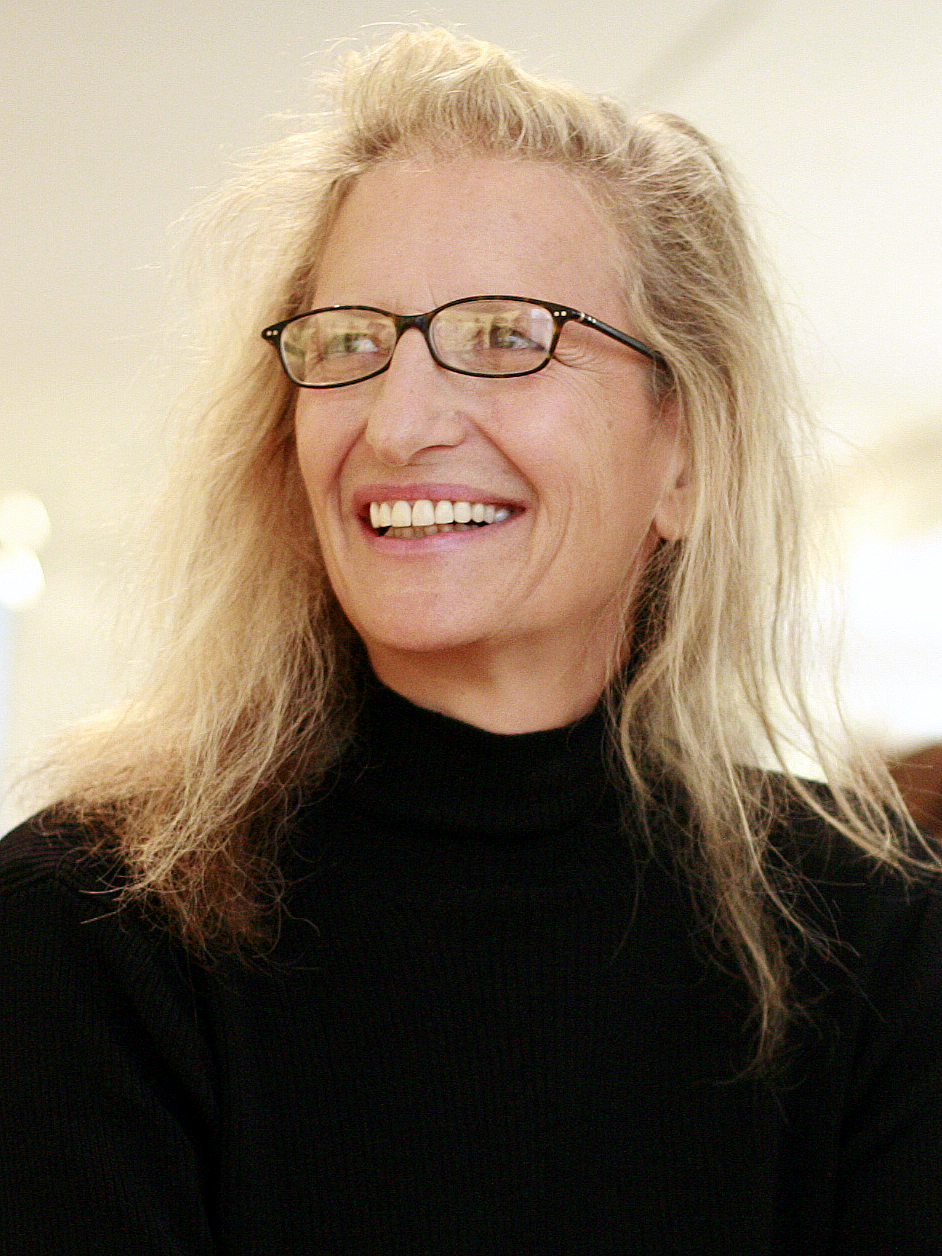
“One doesn’t stop seeing. One doesn’t stop framing. It doesn’t turn off and turn on. It’s on all the time.”
– Annie Leibovitz—
American photographer Annie Leibovitz well known for her celebrity portraits was born in 1949 in Waterbury, Connecticut. She is renowned for her dramatic, quirky, and iconic portraits of a great variety of celebrities. Her signature style is a crisp and well-lighted image.
In 1967, while still a student at the San Francisco Art Institute, she was given her first commercial assignment by Rolling Stone Magazine to photograph John Lennon. Three years later, Leibovitz became the publication’s chief photographer, directing her energies toward a unique presentation of the major personalities of contemporary rock music. She stayed there at the Rolling Stone for a decade doing contemporary photography.
In 1983 she joined the staff of Vanity Fair, which broadened her pool of subjects to include film stars, athletes, and political figures.
She began work as an advertising photographer in 1986, gaining such clients as Honda, American Express, and the Gap. Her commercial images were dramatic and complexly staged, rather than casual.
Annie Leibovitz continues to shoot magazine covers and currently tours giving lectures on her long career in journalism and the arts.
Diane Arbus
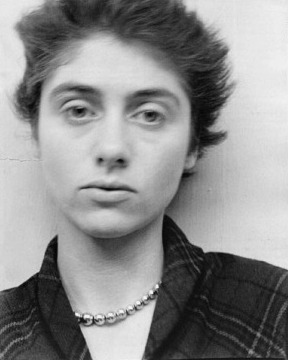
“I work from awkwardness. By that I mean I don’t like to arrange things. If I stand in front of something, instead of arranging it, I arrange myself.”
— Diane Arbus—
Arbus was born on March 14, 1923, in New York City. She was one of the most distinctive photographers of the 20th century, known for her eerie portraits and off-beat subjects. Her photographs were chillingly provocative pictures of crossdressers, prostitutes, sad and lonely children, and dwarfs who stared blankly into her camera, looking somewhat startled. She wanted to photograph ugliness and explore worlds other photographers shunned. She created images that forced us to glare at them while taunting us to look away.
Arbus found success with fashion work but soon branched out to shooting raw, and unusual images of the people she saw while living in New York. She realized that no photograph is truly objective and that your photographs are more of a reflection of yourself than the subject. She was one of the first photographers with this approach.
After years of depression, she committed suicide in her New York City apartment on July 26, 1971.
Cindy Sherman
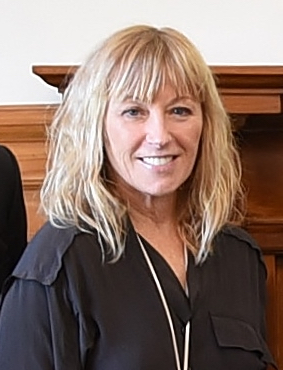
“The still must tease with the promise of a story the viewer of it itches to be told.”
—Cindy Sherman—
Cindy Sherman was a famous photographer born in 1954 in New Jersey. Her work consists primarily of self-portraits, depicting herself in many different contexts and as various imagined characters.
Through these penetrating photographs of herself masquerading as invented characters, she has become one of the most influential artists of her generation. Although she serves as her own model, her photographs are not self-portraits; rather, they are investigations into our identity in American culture through stereotypes that are deeply ingrained in our collective consciousness.
Her photography work is rooted in transformation, perfectly mastering the art of deception as she immerses herself in a new setting and theme with every shot.
For more than 40 years, Sherman has appeared in nearly all of her work, but never as herself. With the help of stage make-up, prosthetics, wigs, costumes, and, more recently, digital tools, she has shapeshifted into hundreds of characters, among them to transform herself into a sex kitten, drug addict, terrifying clowns, Renaissance Madonnas, society matrons, aging diva, and even a corpse as well.
When Sherman is shooting, she’s entirely by herself, acting as photographer, model, make-up artist, hairstylist, and costumer.
Eliot Porter
“Photographs are believed more than words; thus they can be used persuasively to show people who have never taken the trouble to look at what is there.”
—Eliot Porter—
Eliot Furness Porter was born in 1901 in the Chicago suburb of Winnetka, Illinois. He was an American photographer noted for his detailed and exquisite color images of birds and landscapes and is one of the rare photographers who mastered both black-and-white and color photography.
He trained as an engineer at Harvard College, and as a physician at Harvard Medical School, and taught biochemistry at Harvard until 1939 when he gave up medicine to begin using photography to study the deeper mysteries of the outdoors.
He explored new ways of presenting the natural world and his artistic and technical contributions to bird and landscape photography transformed these genres.
He mastered what is known technically as the dye-transfer process, enabling him to make brilliant, full-color enlarged prints from color film exposed inside his camera.
Imogen Cunningham
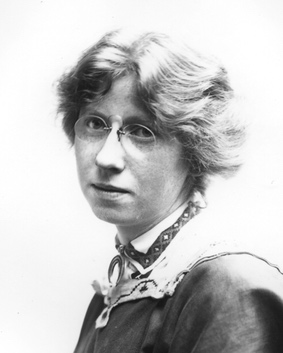
“Which of the photographs is my favorite? The one I’m going to take tomorrow.”
—Imogen Cunningham—
Cunningham a portrait and commercial photographer, was born in 1883 in Portland, Oregon. Like many famous photographers, her fascination with the art form began early and she bought her first camera when she was 18 years old.
Cunningham was not just interested in photography as an art form, she wanted to know the chemistry of photography, and was dedicated to acquiring a full understanding of the science behind her art. She experimented with sharp focus photography, a technique to capture crisp pictures.
By this point, she had already expressed an interest in photographing people. Indeed, throughout the artist's career, there is an ongoing oscillation between the subject of flowers and plants, and that of people.
Cunningham has been called the “Grandmother of Photography” for her seminal role in popularizing the medium in its early years and for successfully moving the practice into the realm of fine art. She is also known for her botanical photography and had an understanding of natural forms and how loght and shadows emphasised them.
Cunningham worked as a photographer almost up to her death in 1976. She was 93 when she passed away in San Francisco.
Frans Lanting
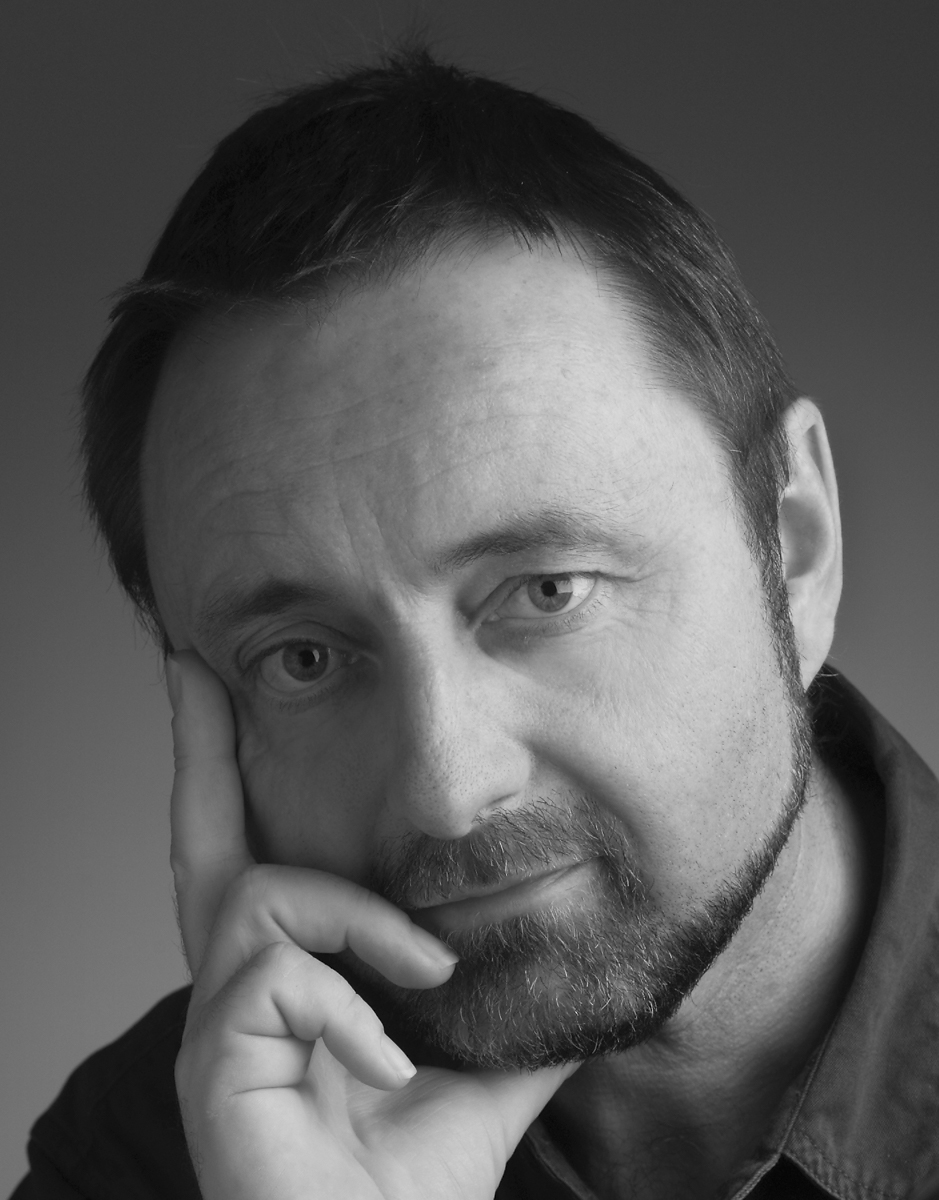
“It's up to us as photographers to give voice to the natural world.”
—Frans Lanting—
Frans Lanting, born in 1951, has been hailed as one of the great nature photographers of our time. He is a magician at mixing artificial and natural light and blending himself into the majesty of nature. He has documented wildlife and our relationship with nature in environments from the Amazon to Antarctica.
His influential work appears in books, and magazines, and has been commissioned by the National Geographic Society, where he has served as a photographer-in-residence.
He has been described as having the mind of a scientist, the heart of a hunter, and the eyes of a poet. Lanting says, “There’s an interaction that goes on between animals and me. If you don’t understand what you are photographing, you are just looking at the surface of things.”
Paul Strand

“If the photographer is not a discoverer, then he is not an artist.”
—Paul Strand—
Paul Strand was a photographer and a filmmaker from the United States. He was born in 1890 in New York City. He began taking photography courses at sixteen. The next year he declared his intention to become “an artist in photography.”
The turning point in Strand’s life came when he uncovered the underlying abilities of a large format camera that became known as “straight photography.” His photos shifted from soft-focus scenes of the modern NYC scene to lay focus on the expressions of objective existence.
Strand’s eye for people was remarkable. His intimate street portraits, which he shot with a hidden camera lens, are renowned for portraying the alienation of modern life.
Over the course of his career, he proved himself not only an incredible portrait, still life, and abstract photographer, but also a pioneer in the development of photography books.
This New York-born pioneer helped forge photography’s path from documentary photography to art, and he roamed the planet in his quest to understand places and cultures.
Strand died in 1976 at the age of 85.
Don McCullin
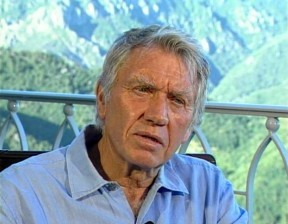
“Photography for me is not looking, it’s feeling. If you can’t feel what you’re looking at, then you’re never going to get others to feel anything when they look at your pictures.”
—Don McCullin—
Sir Donald McCullin is a British photojournalist, recognized for his war photography and images of urban strife. He examines the underside of society, depicting the suffering of the poor, the downtrodden, and the underprivileged.
McCullin has been badly wounded in Cambodia, imprisoned in Uganda, and had a bounty on his head in Lebanon. This war photographer has braved bullets and bombs, not only to get the perfect shot but to help dying soldiers and wounded civilians.
Sally Mann

“Art is seldom the result of true genius; rather, it is the product of hard work and skills learned and tenaciously practiced by regular people.”
—Sally Mann—
Sally Mann was born in 1951, in Lexington, Virginia. In 1983, using her century-old 8 × 10-inch view camera, she shot large-format, black-and-white images of whose powerful images of childhood, sexuality, and death were often deemed controversial.
She has been hailed for her painstaking techniques, which involve mentally sketching each photograph, discarding dozens of shots before extensively laboring in the darkroom to achieve the desired effect.
In the 1990s, Sally Mann transformed the sentimental family photo album into some discomfiting, divisive, and ultimately unforgettable artwork. For her series called, “Immediate Family,” she shot her three children in vulnerable positions.
She believes the censure of her family photographs provoked many people because they illuminated places most of us prefer to keep comfortably dim.
In the mid-1990s, Mann began photographing landscapes on wet plate collodion 8×10 inch glass negatives and used the same 100-year-old 8×10 format bellows view camera that she had used for all the previous bodies of work.
In 2018, Sally Mann exhibited 115 photographs of figure studies, landscapes, and architectural views that explore the themes of memory, desire, death, and the bonds of family, all shot in the American South.
Michael Kenna
“Nothing is ever the same twice because everything is always gone forever, and yet each moment has infinite photographic possibilities.”
—Michael Kenna-
Michael Kenna (British, b.1953) is a photographer who was born in Widnes, England, and is best known for his photographs of black-and-white landscapes that have been described as, “islands of serenity and tranquility in a loud and chaotic world.”
Kenna often takes photographs at dawn or close to dusk, and has been quoted as saying, “You can't always see what's otherwise noticeable during the day . . . with long exposures, you can photograph what the human eye is incapable of seeing.”
Kenna has built up a body of work that centers on the representation of a landscape devoid of human figures; yet the imprint of a human presence is there in a strange, ghostly way . . . in the traces humans leave behind.
He has also done a significant amount of commercial work for companies such as Audi, Rolls Royce, Volvo, Sprint, the Spanish Tourist Board, and Dom Perignon.
Kenna is one of those artists who is fascinated and impassioned by the alchemy of printmaking. For him, a work does not stop at taking a photograph but extends to the perfect match between the image and the print.
Peter Lindbergh

“Although humans see reality in color, for me, black and white has always been connected to the image's deeper truth, to its most hidden meaning.”
—Peter Lindbergh—
Peter Lindbergh, born in 1944, was one of the most influential German fashion photographers and portraitists of the modern era. He pioneered a natural, casual, realistic, unretouched look that starkly contrasted the artificial, heavily made-up, and airbrushed styling prevalent in glossy magazines for much of the 20th century.
An iconic early 90s photographer for Vogue Magazine, while shooting images of Linda Evangelista, Cindy Crawford, Naomi Campbell, and Christy Turlington, he ushered in the new era for fashion photography and kickstarted the entire supermodel phenomenon. Using black and white photography was the key to creating the supermodel.
Peter Lindbergh’s photography goes beyond his fashion and portrait work, he was also a successful advertising photographer, and when he shot the 2017 Pirelli calendar, he took 37,000 images of 15 subjects in seven days, between Berlin, NYC, Los Angeles, and London.
Lindbergh died unexpectedly on the 4th of September 2019, at the age of 74, after decades of turning the fashion landscape and the definition of beauty upside down with his camera.
Sebastião Salgado

“I don’t believe a person has a style. What people have is a way of photographing what is inside them. In a fraction of a second when you freeze reality, what is inside is coming out.”
—Sebastião Salgado—
Sebastião Ribeiro Salgado is a Brazilian photojournalist and documentary photographer whose work powerfully expresses the suffering of the homeless and downtrodden.
He started off as an economist and then turned to photography when he realized that photography had more power than papers to inform people about the world. He discovered photography to be an incredible language that didn’t need any translation because photography could be read in any language.
He believes the ideology or “style” you have in photography should be less about the camera you shoot with, the subject matter you photograph, or whether your shots are in black and white.
Sebastião Salgado, who is 76 recently wrote a letter to Brazil. He urged the country to save the Amazonian tribes from Covid-19. He warned them that the virus could decimate these indigenous people.
Conclusion
Our list of famous photographers could certainly include more names – it wasn't easy to pick them but we tried to include those with a truly majestic body of work. If there are other famous photographers that you think we should mention in this list of famous photographers, let us know in the comments below.






7 Comments
“To take a photograph is to align the head, the eye, and the heart. It’s a way of life.” So true. Couldn’t Agree More. Thanks For Sharing Informative Content.
I also agree with you that – Beagles Rock!
Bah-how have U forgotten about Bill Brandt and Lee Friedlander and included Mccurry.
I second the comment made by S. Basu. Also why not Elliott Erwitt? Someone who introduced humour to photography? And Alex Webb – a pioneer of colour street photography?
Wonderful article and very informative. Thank you so much for compiling this
However, I was a bit surprised that Yousef Karsh was not included in this list. His body of portraits range from Ford factory workers to Fidel Castro and his portrait of Winston Churchill is featured on British pounds.
I agree with you S.Basu, Kuldeep Chaudhari, Hillie Galarza and the eighteen other people whose favorite photographers didn’t make this list. Maybe if Rob choses to do a Part Two of this compilation, I can make everyone equally happy. (I wouldn’t mind the work as well)
Once again … One way ‘white’ street. Black and white as in black photographers are in this pantheon of the history of ‘our’ media. Black Americans photographers; the great James Van de Zee, the purely Renaissance man Gordon Parks are only two photo artist, that must be included in any compilation of accomplished American photographers.